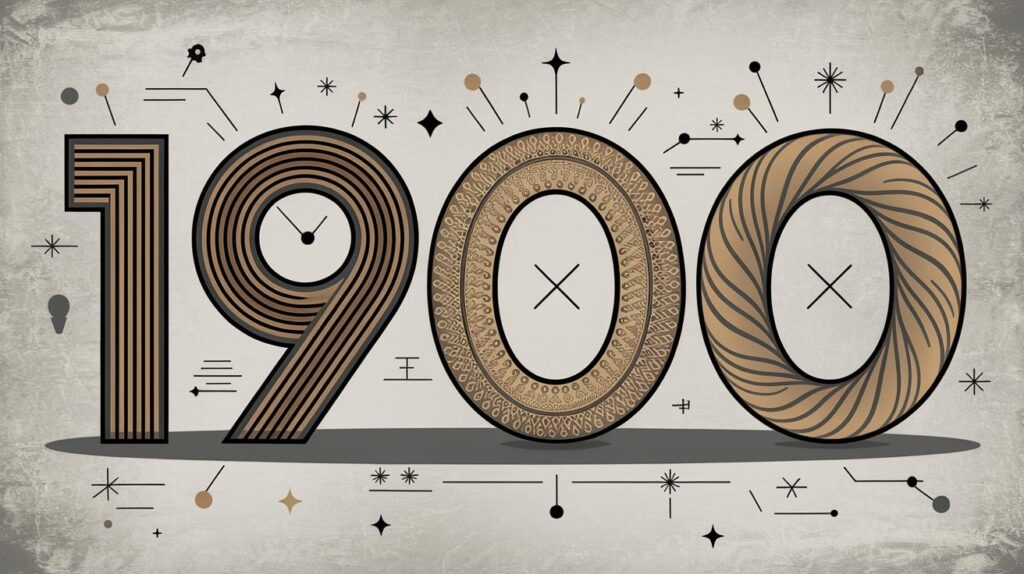Inventions in the 1900s: A Journey Through Time
The dawn of the 20th century marked a pivotal period of growth and change, profoundly shaped by groundbreaking inventions and technological advancements. From the early days of the 1900s to the transformative inventions of the late 1900s, this era witnessed a surge in innovation that laid the foundation for the modern world. From the safety razor in 1901 to the whimsical invention of Velcro in 1948, every year was marked by ingenuity and discovery. This article explores the notable inventions of each year, bringing to light the inventiveness and creativity that defined the 1900s. Let’s delve into this fascinating journey of transformation and see how these inventions have impacted our lives even today.
The Beginning of a Century of Innovation
The early 1900s were characterized by a burgeoning spirit of exploration and innovation. This period served as a fertile ground for inventors and thinkers as they embarked on a mission to address the needs and challenges of a rapidly changing world. Together, they created tools and technologies that significantly shaped the course of history and society.
From new modes of transportation to groundbreaking medical discoveries, the inventions of the early 1900s set the stage for remarkable advancements that would continue to unfold over the coming decades. The resulting creations lay the groundwork for technological progress that propelled humanity into uncharted territories and transformed everyday life.
1900
The year 1900 saw the introduction of the Zeppelin airship, which was crucial in shaping air travel. Ferdinand von Zeppelin, a German inventor, pioneered this innovation with a rigid airframe and propulsion system that changed aeronautics. The Zeppelin symbolized a new era of travel possibilities, and though attempts were fraught with challenges, this laid the groundwork for future air travel exploration.
In the realm of domestic convenience, the turn of the century also witnessed the development of the modern electric battery. Thomas Edison’s improvement in battery technology enabled the longer and more reliable storage of electricity, which spurred the growth of electrical devices key to domestic and industrial use.
1901
The invention of the safety razor by King C. Gillette in 1901 revolutionized personal grooming. Prior to this, shaving involved the use of a straight razor, a more dangerous implement requiring regular maintenance. The disposable safety razor made shaving more accessible to the everyday person, prioritizing safety and convenience.
Another milestone was Guglielmo Marconi’s successful transatlantic wireless communication transmission, marking the beginning of long-distance radio communication. This invention facilitated quicker, more reliable communications and laid the foundation for the global information exchange.
1902
The technological landscape in 1902 was marked by Willis Carrier’s invention of the modern air conditioning system. Originally developed to control the humidity in a printing plant, Carrier’s system keenly influenced industrial processes and eventually led to the widespread use of air conditioning in homes and businesses.
This year also saw the invention of neon lighting by Georges Claude, which would come to symbolize the vibrant energy of urban nightlife, with stunning displays of color that would illuminate cities across the world.
1903
Perhaps one of the most famous innovations of the early 1900s was achieved in 1903 with the Wright brothers’ successful flight of a powered aircraft. Orville and Wilbur Wright’s Flyer marked the dawn of aviation, proving powered, sustained, and controlled flight was possible. This breakthrough paved the way for future developments that would redefine transportation.
Simultaneously, Mikhail Tsvet’s invention of chromatography opened new avenues in the field of chemistry by offering a method for separating mixtures into their individual components, a technique still widely used in scientific research today.
Inventions in the Late 1900s
The late 1900s saw the creation of groundbreaking inventions that further expanded human capabilities and reshaped daily life. The development of the microprocessor in the 1970s laid the foundation for personal computing, which would eventually revolutionize the way people processed information and communicated globally.
Significant technological advancements included the invention of the internet, which redefined how we connect and share information on a global scale. The widespread adoption of mobile phones during the late 1900s enabled instant communication, fundamentally changing personal and professional interactions.
Key Takeaways
| Year | Invention | Impact |
|---|---|---|
| 1901 | Safety Razor | Revolutionized personal grooming |
| 1903 | First Powered Flight | Paved the way for modern aviation |
| 1908 | Model T Ford | Mass production and automobile accessibility |
| 1927 | Television | Revolutionized media and entertainment |
| 1947 | Transistor | Foundation for modern electronics |
| 1969 | Internet | Changed global communication and information sharing |
